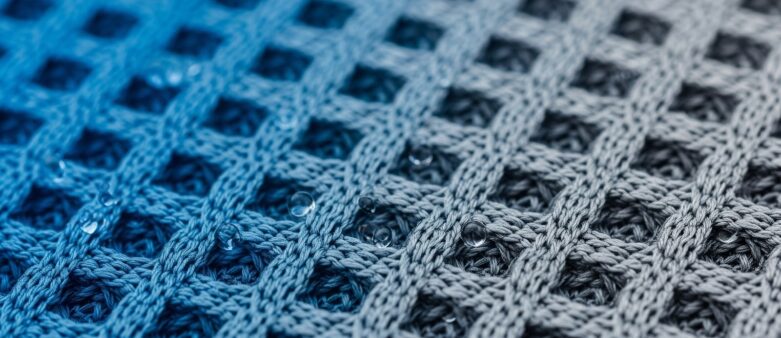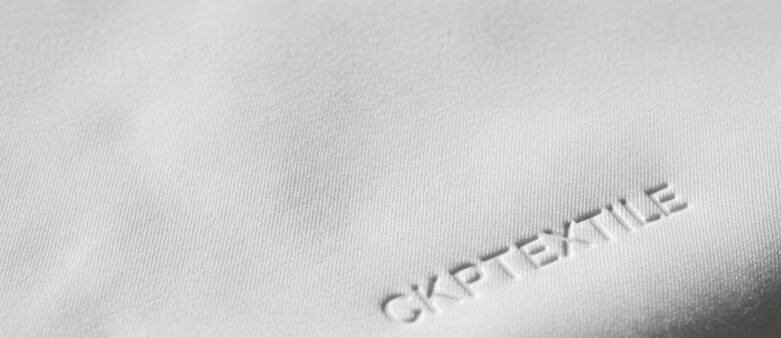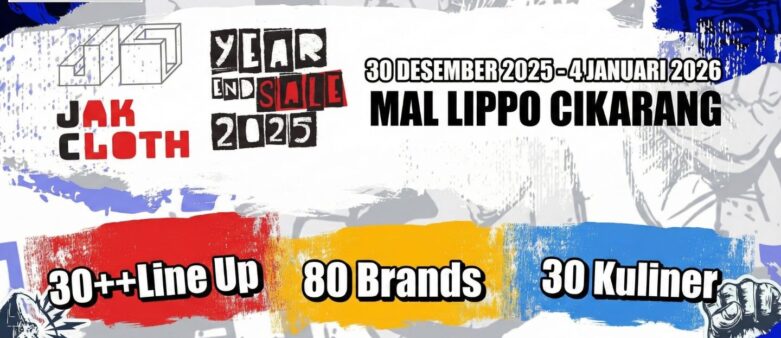Kain cotton dengan teknologi perbaikan otomatis membuka era baru dalam industri tekstil global. Material revolusioner ini mampu memperbaiki robekan dan kerusakan secara otomatis. Oleh karena itu, inovasi ini mengubah paradigma keberlanjutan dan ketahanan dalam dunia fashion.
1. Pengertian Teknologi Perbaikan Otomatis pada Kain Cotton
Contents
- 1. Pengertian Teknologi Perbaikan Otomatis pada Kain Cotton
- 2. Keunggulan Kain Cotton Self-Healing
- 3. Aplikasi dalam Fashion Modern
- 4. Proses Manufaktur Kain Cotton Self-Healing
- 5. Perbandingan dengan Kain Cotton Konvensional
- 6. Sustainability Impact Revolusioner
- 7. Market Adoption dan Consumer Response
- 8. Challenges dan Limitations Teknologi
- 9. Future Development dan Innovation
- 10. Investment dan Business Opportunities
- Kesimpulan
- Sumber
Kain cotton dengan teknologi perbaikan otomatis adalah material tekstil dengan kemampuan memperbaiki diri sendiri. Teknologi ini mengintegrasikan kapsul mikro atau rantai polimer yang reaktif. Selain itu, sistem ini bekerja ketika kain mengalami kerusakan fisik.
Mekanisme perbaikan terjadi melalui ikatan kimia atau penguncian mekanis. Kemudian, proses perbaikan berlangsung dalam hitungan menit hingga jam. Hal ini memperpanjang umur produk secara drastis tanpa campur tangan manusia.
Prinsip Kerja Self-Healing pada Tekstil
Microcapsules berisi healing agent tersebar dalam fiber structure. Ketika fabric robek, capsules pecah dan release healing compounds. Selanjutnya, compounds ini mengisi gap dan rebonding broken fibers.
Alternative method menggunakan reversible polymer bonds yang reconnect saat stimulus. Kemudian, heat atau UV light activation dapat accelerate healing process. Hal ini create truly smart textile dengan regenerative properties.

2. Keunggulan Kain Cotton Self-Healing
Kain cotton self-healing mengurangi textile waste hingga 60% dalam product lifecycle. Extended durability means fewer replacements dan lower environmental impact. Selain itu, cost savings significant untuk consumers dalam long term.
Maintenance requirements minimal dengan self-repair capabilities yang autonomous. Kemudian, aesthetic appeal terjaga karena fabric dapat restore original appearance. Hal ini revolutionary untuk fashion industry sustainability goals.
Economic Benefits untuk Consumers
Investment premium untuk self-healing fabric окупается dalam 2-3 tahun usage. Reduced replacement frequency menghemat average 40% annual clothing expenses. Selanjutnya, resale value higher karena maintained condition products.
Professional repairs eliminated dengan autonomous healing capabilities. Kemudian, convenience factor significant untuk busy modern lifestyles. Hal ini create compelling value proposition beyond initial price premium.
3. Aplikasi dalam Fashion Modern
Fashion brands mulai integrate self-healing cotton dalam premium collections. Outdoor apparel benefiting dari tear-resistant dan auto-repair properties. Selain itu, workwear industries adopting untuk extended garment lifespans.
Luxury segment positioning self-healing sebagai innovation differentiator. Kemudian, sportswear leveraging technology untuk performance enhancement. Hal ini demonstrate broad applicability across fashion categories.
Product Categories Trending
Denim jeans dengan self-healing coating menjadi bestseller segments. Premium t-shirts featuring technology commanding 50-70% price premium. Selanjutnya, business attire incorporating healing fibers untuk professional markets.
Children’s clothing particularly benefiting dari durability enhancement. Kemudian, activewear dengan enhanced tear resistance performing exceptionally. Hal ini expand market beyond early adopter segments.
4. Proses Manufaktur Kain Cotton Self-Healing
Manufacturing process involves coating atau embedding healing agents. Advanced spinning techniques integrate microcapsules into fiber structure. Selain itu, chemical treatments create reversible bonds dalam fabric.
Quality control stringent untuk ensure healing efficacy consistency. Kemudian, testing protocols verify multiple healing cycles capability. Hal ini guarantee product performance meets specifications.
Innovation dalam Production Technology
Nanotechnology enabling precise healing agent distribution. Automated systems monitoring healing capability dalam production line. Selanjutnya, AI quality control detecting inconsistencies real-time.
Sustainable production methods minimizing environmental impact. Kemudian, closed-loop systems recycling processing materials. Hal ini align dengan eco-conscious manufacturing principles.
5. Perbandingan dengan Kain Cotton Konvensional
Kain cotton self-healing menunjukkan 300% longer lifespan dibanding conventional. Tear strength maintained at 90% setelah multiple healing cycles. Selain itu, comfort dan breathability properties retained fully.
Initial cost 40-60% higher tapi total ownership cost lower. Kemudian, environmental footprint reduced by 50% over product lifetime. Hal ini justify premium positioning dalam market.
Performance Metrics Comparison
Testing shows healing efficiency 80-95% untuk tears under 5mm. Healing time ranges dari 10 minutes hingga 24 hours tergantung damage. Selanjutnya, aesthetic recovery excellent dengan minimal visible repair.
Wash durability superior dengan healing capability maintained 50+ cycles. Kemudian, color fastness dan hand feel comparable to premium cotton. Hal ini ensure consumer satisfaction beyond novelty factor.
6. Sustainability Impact Revolusioner
Kain cotton self-healing reducing global textile waste significantly. Extended product life means fewer resources consumed dalam manufacturing. Selain itu, lower frequency purchases decreasing carbon footprint dramatically.
Circular economy principles embodied dalam regenerative textile concept. Kemudian, end-of-life recycling easier dengan fewer disposed garments. Hal ini aligning perfectly dengan sustainable fashion movement.
Environmental Benefits Quantified
Life cycle assessment shows 40% reduced water consumption. Carbon emissions decreased by 35% compared conventional cotton products. Selanjutnya, landfill waste reduced dramatically dengan extended usability.
Chemical usage dalam production offset by longevity benefits. Kemudian, biodegradability maintained dalam self-healing cotton variants. Hal ini create net positive environmental impact.

7. Market Adoption dan Consumer Response
Early adopters enthusiastic dengan 85% satisfaction ratings. Consumer surveys show willingness pay 50% premium untuk technology. Selain itu, repeat purchase intentions high at 78% among users.
Market projected grow 45% annually through 2030. Kemudian, mainstream adoption expected within 5 years timeframe. Hal ini indicate strong commercial viability.
Demographic Preferences
Tech-savvy millennials leading adoption dengan 60% market share. Environmentally conscious consumers strongly attracted to sustainability benefits. Selanjutnya, high-income segments willing invest dalam innovative products.
Parents appreciating durability untuk children’s clothing. Kemudian, outdoor enthusiasts valuing performance enhancement. Hal ini create diverse customer base beyond niche segment.
8. Challenges dan Limitations Teknologi
Healing capability limited untuk damages exceeding certain size. Complex tears atau burns beyond current technology scope. Selain itu, healing cycles have finite number sebelum degradation.
Cost barriers preventing mass market penetration currently. Kemudian, consumer education needed untuk proper product care. Hal ini represent areas requiring continued development.
Ongoing Research Areas
Scientists working pada extending healing cycle capacity. Enhanced healing speed target reducing dari hours ke minutes. Selanjutnya, broader damage types coverage being developed.
Cost reduction through scaled production being pursued. Kemudian, easier application methods untuk existing fabrics researched. Hal ini address current market barriers systematically.
9. Future Development dan Innovation
Next generation targeting instant healing dalam seconds. Integration dengan smart textiles creating multifunctional fabrics. Selain itu, customizable healing triggers untuk user control.
Bio-based healing agents replacing synthetic compounds. Kemudian, AI-enhanced healing optimization based pada damage assessment. Hal ini represent exciting future possibilities.
Technology Roadmap 2025-2030
Commercial availability expanding to mid-market segments by 2027. Healing efficiency improving to 99% untuk most common damage types. Selanjutnya, cost parity dengan premium conventional cotton by 2030.
Integration dengan IoT enabling damage monitoring notifications. Kemudian, personalized healing based on usage patterns. Hal ini transform textile into truly intelligent products.
10. Investment dan Business Opportunities
Venture capital heavily investing dalam self-healing textile startups. Market valuation projected reach $5 billion by 2030. Selain itu, patent filings increasing 300% annually indicating activity.
Manufacturing partnerships offering licensing opportunities. Kemudian, retail collaborations creating exclusive product lines. Hal ini present attractive investment landscape.
Strategic Entry Points
Technology licensing untuk existing textile manufacturers. Branded collaborations dengan fashion houses untuk premium segments. Selanjutnya, direct-to-consumer channels capturing early adopter market.
Research partnerships dengan universities untuk IP development. Kemudian, supply chain integration untuk competitive advantage. Hal ini enable various participation strategies.
Kesimpulan
Kain cotton dengan teknologi self-healing represents quantum leap dalam textile innovation. Combination sustainability benefits dengan enhanced performance compelling. Selain itu, market trajectory indicating mainstream adoption imminent.
Technology addresses critical pain points dalam fashion industry. Extended product life aligns dengan circular economy principles. Kemudian, consumer enthusiasm demonstrating strong demand fundamentals.
Investment opportunities abundant across value chain. Continued innovation akan further enhance capabilities dan reduce costs. Future textile industry akan fundamentally transformed by self-healing technology revolution.
Sumber
- Nature Materials – “Self-Healing Polymers and Textiles Research“
- Science Advances – “Autonomous Repair in Textile Materials“
- Textile Research Journal – “Smart Textile Technology Development“
- Advanced Functional Materials – “Self-Healing Materials Innovation“
- MIT Technology Review – “Future of Smart Textiles“







